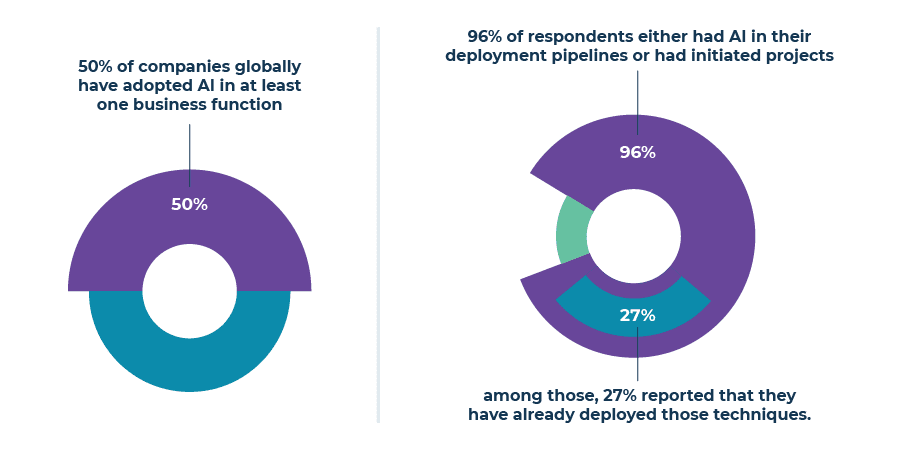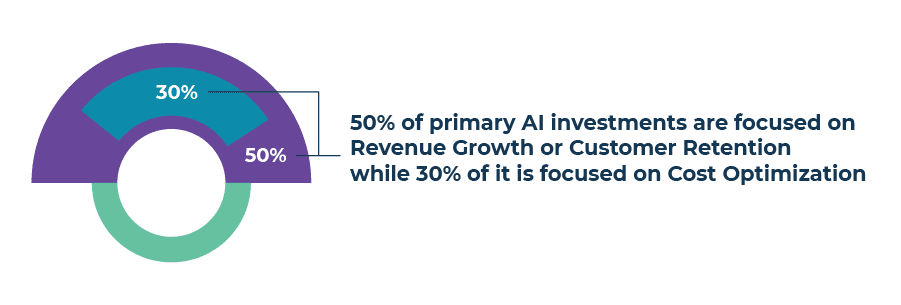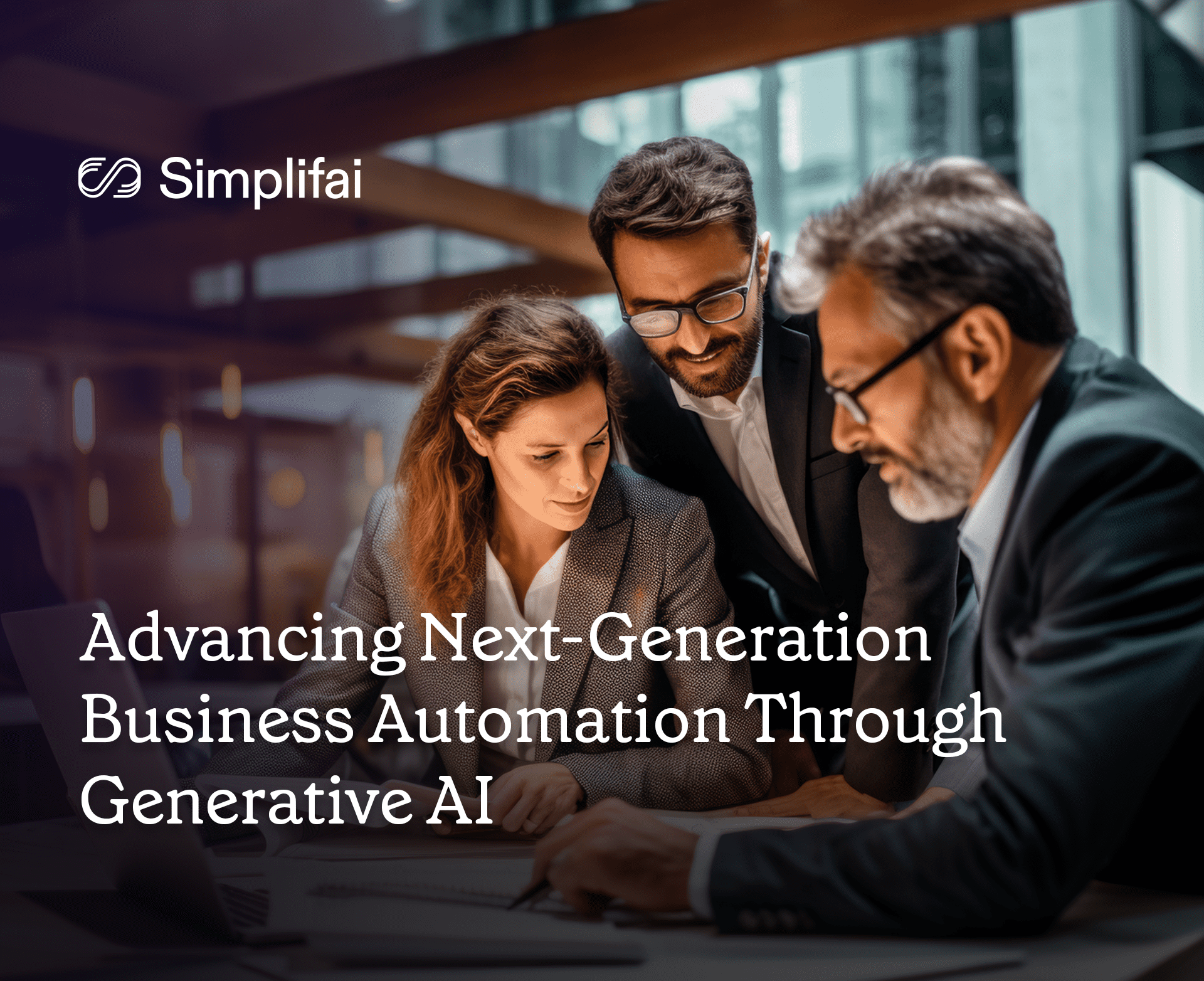AI led business automation is a necessity and not a choice

While most of us still think and believe that Artificial Intelligence led business automation is a technology of the future, the reality is far beyond thought. We may say that acceptance of AI in mainstream society is a new phenomenon, but surprisingly the concept of AI is not. It came into existence back in 1956. Since then, there is a significant progress toward developing an AI system that is a technological reality.
Today, Artificial Intelligence is no more a science-fiction, but it has become more customary in our daily lives. AI is a household name and sometimes even has a household presence with virtual assistants like Alexa, or Google Home. The interaction between human and AI technologies has increased significantly. Therefore, the technology is being normalized and no more considered a hype.
AI is the present and future of business automation
Businesses are no exception to the fact that AI is the present and future of this fast-growing world. Today, Artificial intelligence is changing the way most businesses operate. Considering the sustainable outcome, they have started leveraging the power and diversity of AI. As per Gartner, AI techniques solve a wide array of business problems and generate significant returns on investment, ranging from about 20% to over 800%.[1]

One can rightly say that Artificial Intelligence is already disrupting virtually every business process in every industry. The scope of AI within any business is quite vast ranging from the mundane to demanding tasks.
Many businesses have already started to automate time-consuming and repetitive tasks that were initially done manually. This has helped businesses increase productivity and utilize the human workforce for more crucial engagements where deep human understanding is required. As per a study by PWC, 54% of executives say that implementing AI in their workplace has increased productivity while 79% think AI will make their jobs simple and more efficient.[2]


As AI technologies proliferate, they are becoming imperative to maintain a competitive edge. As per a report by Mckinsey, 50% of companies globally have adopted AI in at least one business function. [3] Another survey by Gartner identifies that 96% of respondents either had AI in their deployment pipelines or had initiated projects; among those, 27% reported that they have already deployed those techniques.[1]

The need for business automation
In recent times, most businesses have identified a need for business automation. Be it Banking and Financial Service Institutions (BFSI), the Public Sector, Telecom Services, or E-commerce, AI has a vast reach to deliver value everywhere.
With technologies such as Natural Language Processing (NLP), Intelligent Process Automation (IPA), and Machine Learning (ML), the scope of AI in business automation has increased to a great extent. There are solutions based on NLP and IPA that require no coding or technical skills. With a simple understanding of process workflow, businesses can implement AI solutions.
Today it is easier to find no-code AI solutions and products customizable as per business requirements. This saves businesses from the hassle of upskilling or up staffing for implementing an AI project. These technologies today help businesses establish end-to-end automation enabling them to scale faster.
It is interesting to learn that 75% of executives fear going out of business within five years if they don’t scale AI. [4] The same survey highlights, that 58% of respondents have increased investments in AI for workforce planning, 48% are ramping up investments for simulation modelling and supply chain resilience, 43% are upping investments in AI for scenario planning, and 42% for demand projection. [4]

ROI of business automation
When it comes to implementing AI for business automation return on investment is a major aspect that businesses look at. The ROIs can be direct or indirect depending on the business use case. The three topmost direct ROIs that businesses look at are revenue growth, customer retention, and cost optimization.
A report by Gartner states that 50% of primary AI investments are focused on Revenue Growth or Customer Retention while 30% of it is focused on Cost Optimization.[5] The indirect ROIs can be saving human work hours, getting rid of repetitive and mundane tasks, increasing work efficiency, improving response time, streamlining workflow, etc. It is important to calculate your ROI before investing in any automation solution.

Businesses should look for automation solutions that can offer customized products to meet the specific requirement of the proposed use case. To make sure businesses get the most out of an AI project, it is advisable to keep the scope pre-defined. It will not only make it easier for businesses to measure ROIs but also give a well-defined goal to the vendor.
Overall Summary
It is high time businesses start realizing the relevance of AI technologies in today’s time. The value outcomes offered by the technology can help businesses grow exponentially and sustain the current market scenario. The above numbers clearly support the statement that automation is no more a choice for businesses; rather it has become a necessity to survive this highly competitive era.
About Simplifai
Simplifai is an AI solution company that provides end-to-end automation for businesses with the help of Digital Employees. These AI-powered solutions can work in any third-party system, can be programmed to carry out specific tasks at the front- and back-end. Our solutions can provide upto 90% automation grade and can be implemented in a few weeks.
Your company has already taken a very good step ahead by considering using AI in business applications and what AI can do for a business. It’s time to know more details about starting out in AI, and the further processes involved. For the same, check out how Simplifai’s Digital Employees work by clicking the following:
Reference:
[1] Brethenoux, E., & Linden, A. (2021, June 18). 5 Ways Artificial Intelligence and Machine Learning Deliver Business Impacts. Gartner. Retrieved April 18, 2022, from https://www.gartner.com/document/code/745276?ref=authbody&refval=4012503
[2] PricewaterhouseCoopers. (n.d.). How can organisations reshape business strategy with Ai? PwC. Retrieved April 18, 2022, from https://www.pwc.com/gx/en/issues/data-and-analytics/artificial-intelligence/organisations-business-strategy.html#:~:text=54%25%20of%20executives%20say%20that,intelligence%20to%20strengthen%20human%20decisions.
[3] Balakrishnan, T., Chui, M., Hall, B., & Henke, N. (2020, November 17). The state of AI in 2020. McKinsey & Company. Retrieved April 18, 2022, from https://www.mckinsey.com/business-functions/mckinsey-analytics/our-insights/global-survey-the-state-of-ai-in-2020
[4] PricewaterhouseCoopers. (2021). AI predictions 2021. PwC. Retrieved April 18, 2022, from https://www.pwc.com/us/en/tech-effect/ai-analytics/ai-predictions.html
[5] Sicular, S. (2020, September 29). Gartner’s update on AI investments in the Enterprise. Gartner Inc. Retrieved April 18, 2022, from https://blogs.gartner.com/svetlana-sicular/gartners-update-on-ai-investments-in-the-enterprise/?_ga=2.119045513.1273177699.1650258575-1279685044.1638771210


